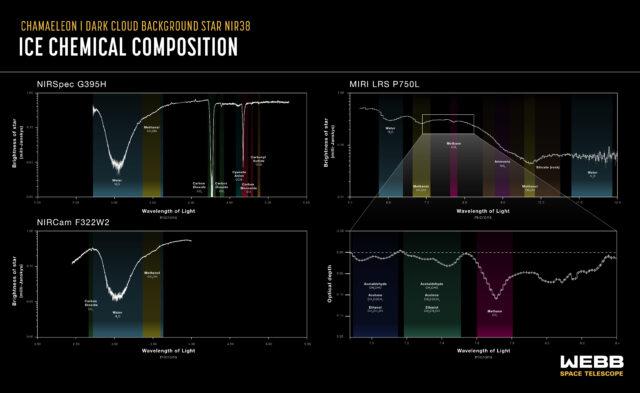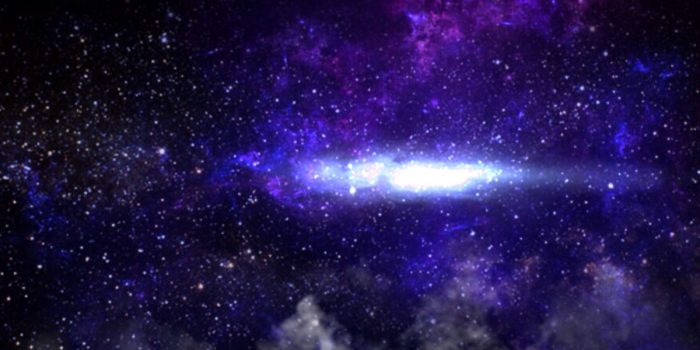Scientists using the James Webb Space Telescope (JWST) have observed and measured the coldest ice in the deepest reaches of an interstellar molecular cloud to date. The frozen molecules are complex molecules that could one day form the basis for a new generation of planets and stars.
Chamaeleon I, the newly discovered cloud of ancient ice, is a star-forming region that orbits within the Milky Way roughly 500 light-years from Earth. Webb measured these specs of ice at a staggering -263 degrees Celsius (-441 degrees Fahrenheit). That’s just 10 degrees Celsius above absolute zero.
Webb’s incredible sensitivity in infrared allowed it to capture absorption spectra as starlight passed through the cloud, making it possible to identify elements that are key to the development of terrestrial planets: carbon, hydrogen, oxygen, nitrogen, and sulfur (known collectively as CHONS).

Before stars, planets, and moons, there is just a big collection of dust and gas known as a molecular cloud. These vast interstellar realms give rise to new stars as the gas collapses under gravity. But before that, they’re intensely frigid and hard to observe due to their density.
“We simply couldn’t have observed these ices without Webb,” says Webb project scientist Klaus Pontoppidan. “In regions that are this cold and dense, much of the light from the background star is blocked, and Webb’s exquisite sensitivity was necessary to detect the starlight and therefore identify the ices in the molecular cloud.”
“Our results provide insights into the initial, dark chemistry stage of the formation of ice on the interstellar dust grains that will grow into the centimeter-sized pebbles from which planets form,” lead study author Melissa McClure, an astronomer at Leiden Observatory in the Netherlands, said in a statement.
The team also found more complex molecules they can’t specifically identify. But the finding proves that complex molecules do form in molecular clouds before they’re used up by growing stars.
“This is just the first in a series of spectral snapshots that we will obtain to see how the ices evolve from their initial synthesis to the comet-forming regions of protoplanetary disks,” McClure said in the statement. “This will tell us which mixture of ices — and therefore which elements — can eventually be delivered to the surfaces of terrestrial exoplanets or incorporated into the atmospheres of giant gas or ice planets.”


